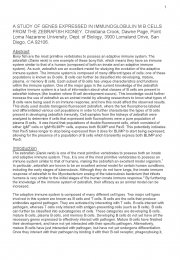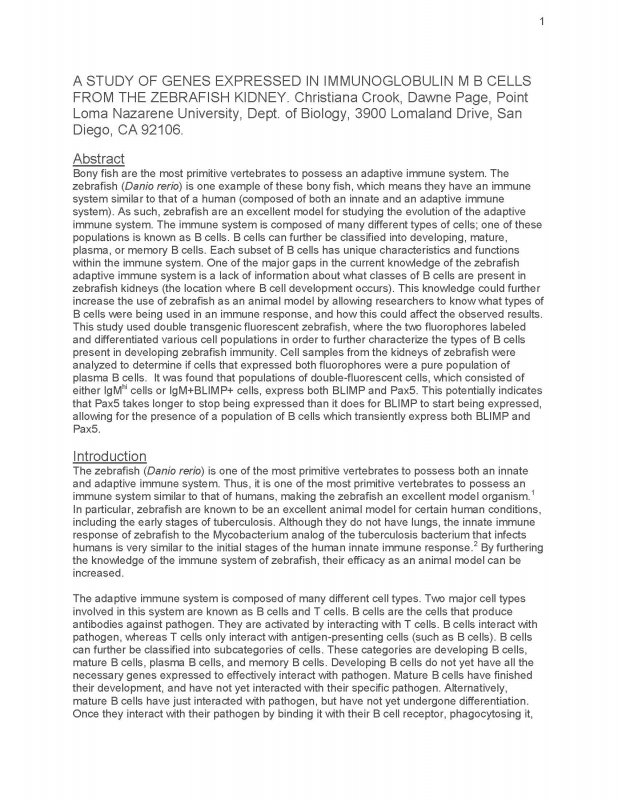- Resource Types
- Resource Languages
- Institutional Repository
 Visit the home page
Visit the home page
About Site Language
WHDL is viewable in multiple languages. Use the pull-down menu to select a language to view the site.
I changed my language, but I’m still seeing resources in the other languages?
If a resource or text has not been translated into your selected language, it will appear in the initially added language. We are always looking for help translating these resources. If you can help, contact us!
WHDL - 00011668


Bony fish are the most primitive vertebrates to possess an adaptive immune system. The zebrafish (Danio rerio) is one example of these bony fish, which means they have an immune system similar to that of a human (composed of both an innate and an adaptive immune system). As such, zebrafish are an excellent model for studying the evolution of the adaptive immune system. The immune system is composed of many different types of cells; one of these populations is known as B cells. B cells can further be classified into developing, mature, plasma, or memory B cells. Each subset of B cells has unique characteristics and functions within the immune system. One of the major gaps in the current knowledge of the zebrafish adaptive immune system is a lack of information about what classes of B cells are present in zebrafish kidneys (the location where B cell development occurs). This knowledge could further increase the use of zebrafish as an animal model by allowing researchers to know what types of B cells were being used in an immune response, and how this could affect the observed results. This study used double transgenic fluorescent zebrafish, where the two fluorophores labeled and differentiated various cell populations in order to further characterize the types of B cells present in developing zebrafish immunity. Cell samples from the kidneys of zebrafish were analyzed to determine if cells that expressed both fluorophores were a pure population of plasma B cells. It was found that populations of double-fluorescent cells, which consisted of either IgMhi cells or IgM+BLIMP+ cells, express both BLIMP and Pax5. This potentially indicates that Pax5 takes longer to stop being expressed than it does for BLIMP to start being expressed, allowing for the presence of a population of B cells which transiently express both BLIMP and Pax5.
81 Resources